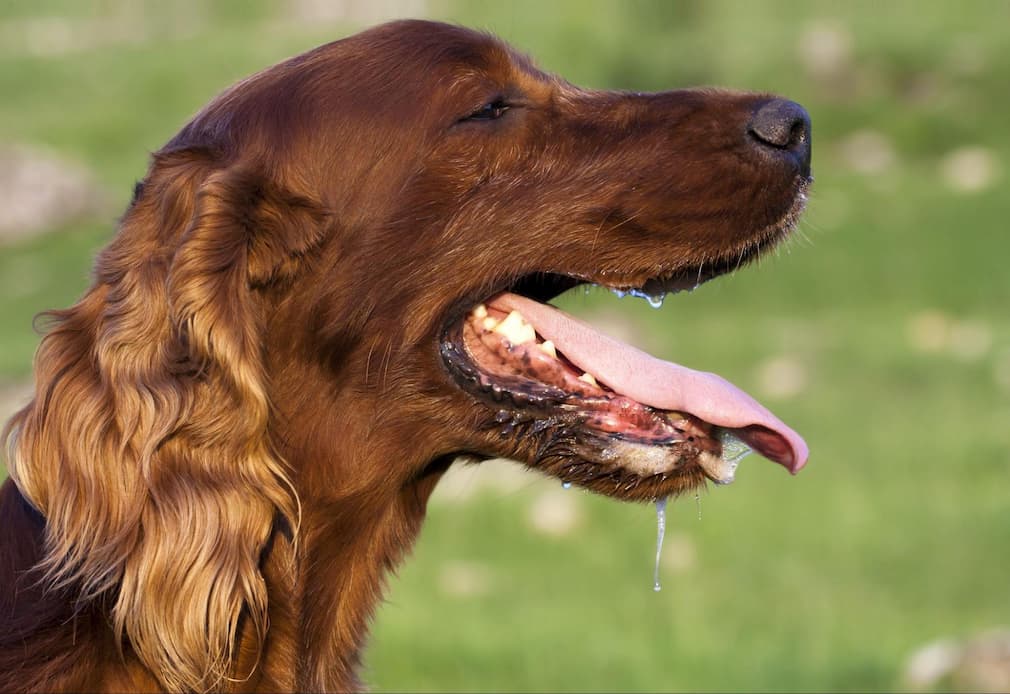Dear Dr. Weaver,
We have a cocker spaniel, and he has huge allergies. He has trouble breathing all of the time. We tried inhalers and breathing treatments. It seems to help for a few minutes, but after that, it is downhill again. He is allergic to a lot of things, but we keep that under direct supervision. Is there anything we can try to help his breathing problems?
Thank you so much,
Tasha
Dear Tasha,
Dogs with severe bronchitis or COPD (chronic obstructive pulmonary disease) are a constant battle. The goal is to maintain a good quality of life, realizing that a cure is not an option. These dogs usually require ongoing prednisone treatment with periodic chest X-rays and courses of antibiotics to treat secondary pneumonia. At some point, you should have a BAL (bronchoalveolar lavage) with culture and cytology to ensure the correct diagnosis.
The inhalers help some with bronchospasm, but this is not as significant in dogs as in humans, so your response is relatively standard. Treating the underlying allergies could help but usually will not prevent the episodes. Although it only helps sometimes, I always do a 4 – 6 week course of Doxycycline, which will kill certain lung organisms. This is a very complex illness, and if you feel your dog is not getting a good enough quality of life, you might want to request a referral to a veterinary internal medicine specialist.
-Dr. Weaver
Signs of Trouble Breathing in Dogs
As a pet owner, keeping an eye on your dog’s breathing patterns is essential. If you notice any signs of labored breathing, it could indicate that your dog is struggling to breathe. Some common signs to look out for include wheezing, coughing, panting excessively, and breathing heavily, even at rest. If you notice any of these symptoms, it is crucial to seek veterinary attention right away, as they could indicate a serious underlying health issue. By being vigilant and aware of your dog’s breathing patterns, you can help ensure they receive the care they need to stay healthy and happy.
Here are some signs to look out for:
- Panting
- Sitting Up to Breath
- Blue Gums
- Foaming at the Mouth
- Anxiety
- Coughing, particularly at Night
- Hunching
- Rapid Respiration
- Horse Vocalization
- Open-Mouthed Breathing
- Hunching
Possible Causes of Difficulty Breathing in Dogs
A variety of conditions can cause breathing difficulties in dogs. These include respiratory infections, allergies, heart disease, obesity, and even certain types of cancer. Some breeds, such as those with shortened snouts, are more prone to respiratory issues. It’s important to monitor your dog’s breathing and seek veterinary care if you notice any changes or signs of distress, such as wheezing, coughing, or rapid breathing. Early diagnosis and treatment can help manage the condition and improve your dog’s quality of life. Some of the below are contributing factors to breathing problems in canines.
- Cancer
- Trauma
- Heart Failure
- Laryngeal Paralysis
- Bronchitis
- Asthma
- Allergies
- Heartworm Infection
- Pneumonia
- Metabolic Issues
- Infections diseases like canine flu
In addition to the conditions listed above, below are some reasons a canine may exhibit breathing problems.
Excessive Panting
Pets pant to regulate their internal body temperature, which is normal. If your pet is experiencing excessive panting and abnormal breathing, it is recommended to schedule a visit with your veterinarian for proper evaluation and treatment.
Dyspnea
Animals with this condition experience difficulty breathing and may struggle to inhale and exhale normally. Canines experiencing difficulty breathing may produce loud sounds as they attempt to inhale and exhale.
Tachypnea
This medical condition results in rapid breathing in pets without any apparent cause.
Immediate Steps to Take if Your Dog is Having Trouble Breathing
It’s hard to imagine your dog suddenly collapsing while you are out for a walk or at home relaxing. Are you prepared to help your furry friend should this happen? Although there are similarities, Canine CPR is not the same as human CPR. For more detailed training, research dog CPR classes in your community.
Check For These First
- Response: Do they respond when you call their name? If not, they are unconscious.
- Breathing: Is your dog breathing normally? Can you detect a breath? If not, you will need to help the dog.
- Pulse or Heartbeat: Check the upper inside thigh or listen carefully for a heartbeat.
Remember the ABCs
- Airways: Carefully tilt the head back and look for any objects blocking the airways and remove them.
- Breathing: Look for the dog’s chest to rise and fall to indicate breathing is happening.
- Circulation: Check the pup for a pulse.
Immediate CPR
To determine if a dog needs CPR, check their airway, breathing, and gum color. If their airway is clear but not breathing, and their gums are not a healthy pink color, immediate CPR is necessary. A blueish tinge to their gums indicates abnormal circulation and further necessitates CPR to increase their chance of survival.
When to Seek Emergency Veterinary Care
It is important to identify signs and conditions in your pet that may indicate an emergency, as immediate veterinary assessment and treatment may be necessary.
When your pet struggles to breathe, it can lead to oxygen deficiency, a serious emergency. This condition is called dyspnea, and it can quickly become life-threatening. It’s essential to seek immediate attention for your pet if you notice any signs of difficulty breathing, gasping for air, or labored breathing. These symptoms require urgent medical attention to ensure your pet’s safety. Some other symptoms that prompt an immediate trip to the vet include:
- Shallow Breathing
- Wheezing
- Blue or Pale Gums
- Increased Effort to Breathe
- Increased Respiratory Rate (above 32 breaths per minute)
Diagnostic Tests and Treatments for Breathing Problems in Dogs
The veterinarian will perform a detailed physical examination to diagnose your dog’s breathing issue. This will involve observing your dog’s breathing and listening to the chest and lungs. The veterinarian may press on your dog’s windpipe to induce coughing and observe the cough. If your furry friend is having severe difficulty breathing, oxygen may be administered to stabilize her before further testing.
Identifying Causes of Difficulty Breathing in Dogs
To identify potential causes of health issues, a urinalysis, complete blood count, and chemical blood profile may be suggested. These tests can indicate the presence of anemia, infection, heartworm, toxins, or impaired organ function.
Further testing is necessary to examine the condition and function of the heart, lungs, and abdomen. X-rays and ultrasounds are commonly used for this purpose. If there is fluid buildup in the chest, lungs, or belly, it may be extracted for clinical evaluation. An electrocardiogram can measure the heart’s electrical activity. In some cases, an endoscope may be used to examine the dog’s nose and airways visually.

Treatment and Recovery Tips for Breathing Difficulties in Dogs
Prompt treatment is crucial to provide your dog with oxygen therapy and medication, as this can prevent and even reverse organ damage caused by oxygen deprivation. Often, oxygen therapy is used to stabilize your dog’s breathing while the vet seeks to determine the leading cause of the breathing problem. If fluid has built up around the lungs, the doctor will need to release that fluid with a needle.
When your furry friend is released to go home, follow all the veterinarian’s instructions for rest. You may be asked to limit time outdoors and exercise. Make your home comfortable and relaxing for your pup so their condition will improve. Closely monitor your dog’s breathing and reach out to your pet care provider if you notice any negative changes.











